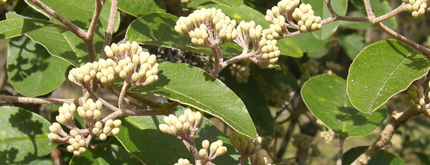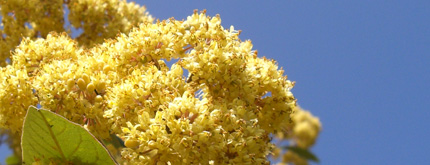
Origins of Kūmarahou
Pomaderris Kumerahou

The highest quality Kumarahou grows in specific conditions in the northern regions of Aotearoa New Zealand. They are small shrubby trees which grow to two or three meters in height, but are known to grow up to four meters in a shady and sheltered site.
The leaves are a dark olive green colour, oval shaped with a whitish underside. They grow to about five or six centimetres in length, and three or four centimetres in width.

Kumarahou flowers appear in profusion at the tips of the branches in clusters. These clusters begin to form as soon as the current seasons flowers finish. The flowers are bright yellow and announce to Māori people that it is time to plant Kumara (a root vegetable also known as sweet potato). The flowers can also be wet and rubbed in the hands as you would use soap.
The bitterness of the simmered Kumarahou leaves also led settlers to use it as a replacement for hops in brewing beer.
Traditionally Kumarahou was used both internally and externally for many skin complaints, or to put in bathing water.
I have not used it externally, as we always simmered and drank it for chest complaints, asthma and as a general tonic. It is also a blood purifier, gentle purgative and helps relieve bladder problems and arthritis.
Read more about Kūmarahou, including what it's used for and how to use it as a medicine here.